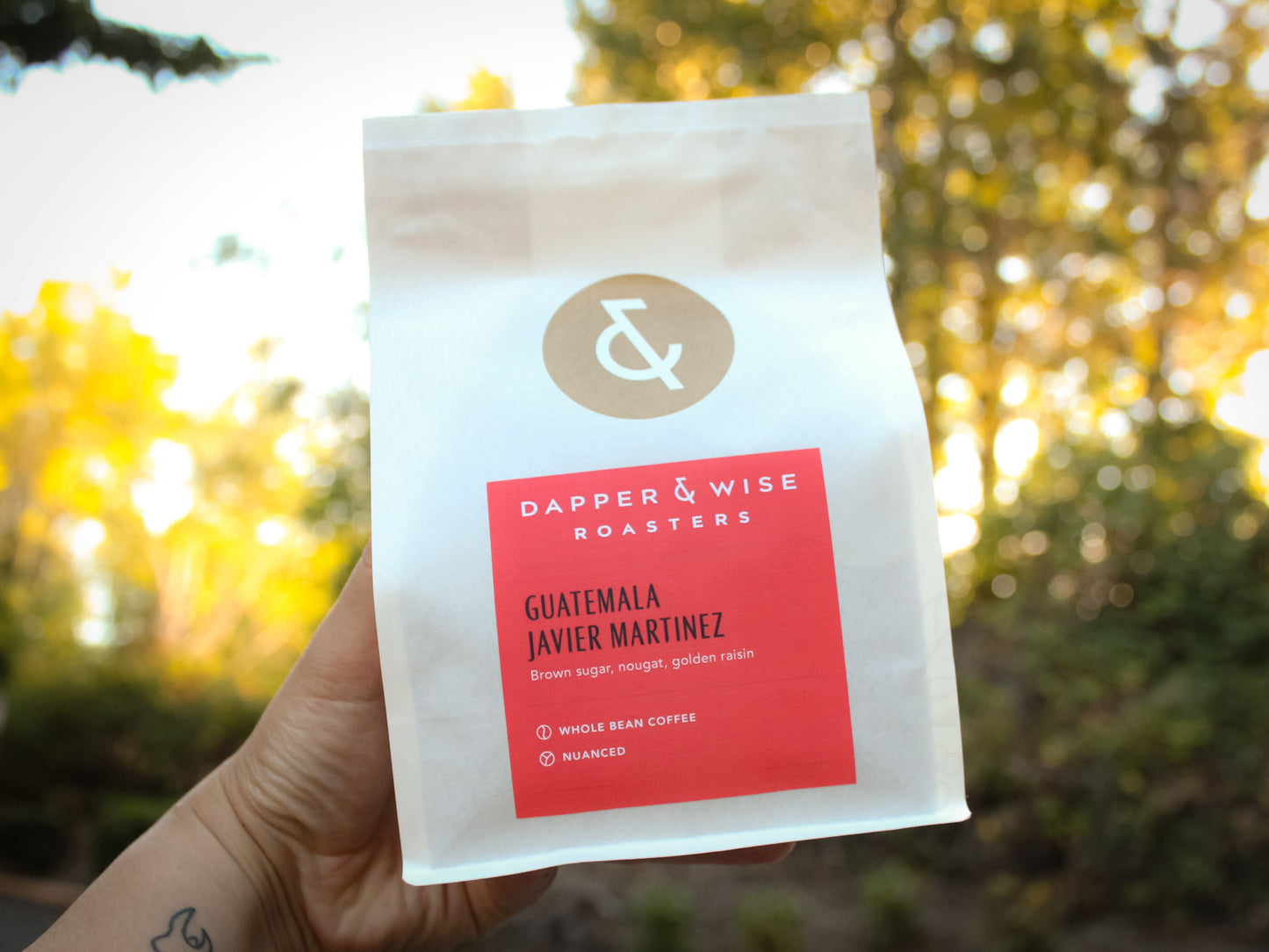
Photo: Jasmine Chavez
Time for an encore here at the D-dub roastery as we welcome back Javier Martinez’s coffee for the fourth time! Can you have an encore for a fourth time, or does it stop being an encore at some point? This actually just might be the perfect question to think on while sippin a nice n warm cup of Guatemalan coffee, specifically Javier’s coffee :)
This is a washed process lot made up of bourbon and caturra varieties grown in Peña Roja, near La Mesilla in Huehuetenango (way-way-ten-ANG-go) in Guatemala of course. One quick fun fact about this farm is that Javier plants some other trees besides coffee such as gravillea and chalúm. These trees provide some shade for the coffee plants and also resting places for migrating birds. Furthermore, these trees benefit the soils with micronutrients which means Javier has less need to use any synthetic chemical fertilizers. The importer who shared this coffee with us, Shared Source (get it? Shared?) tells us that Javier actually learned how to farm from his mother, Porfiria, and nowadays, Javier manages both his farm and his mother’s farm, for a total of 24 hectares about 1,780 meters up.
Shared Source has also told us a little bit about Javier’s post-harvest practices. After picking ripe coffee cherries, Javier depulps them (removes the fruit layer) then ferments the seeds under water in a plastic covered concrete tank for about 24 hours. Fermenting under water allows for a more controlled and uniform fermentation. As discussed in previous blog posts (this blog right here!) this fermentation step plays a helpful role in weakening that sticky mucilage layer so that it comes right off with just a little bit of agitation. About half way through this 24 hour fermentation, Javier removes the seeds, gives them a rinse, then adds them back into the fermentation tank with some fresh water. Once at that +/- 24 hour mark, the coffee seeds are washed through channels to remove the mucilage. (Basically a lil water slide that the coffee is pushed through with rakes. As the coffee makes its way through the channel, rubbing and scuffing along the walls and other seeds, the mucilage falls off.) The seeds are then sorted according to their density, which helps to remove those over-ripes and also under-ripes, as these could negatively effect quality and uniformity if too many find their way into the finished lot of coffee.
Coffee quality starts in the soil health, and can be heavily influenced by post-harvest practices, and as we can see, Javier is making moves to improve quality at every step of this coffee’s life.
When this coffee arrives to our roastery, it becomes our job to not screw it up. Up until the point where we enter the equation, this coffee has received so much care and attention, so when it becomes time to roast this coffee, we try to keep this bigger picture in mind and do our absolute best to help this coffee shine. I forgot where we heard it, but we once heard a coffee supply chain described as a row of windows facing each other. Each window represents a step in the supply chain, starting at the farm and ending with your cup. No matter where you find yourself in the supply chain, you can look through the window closest to you, and take a look back through all the windows, and experience the coffee’s quality from the beginning, at the farm level. Assuming nothing goes wrong, each window stays perfectly clear and easy to see through. However, if we were to burn the roast for instance, our window becomes dirty, and when we look back through the series of windows, it becomes harder to appreciate and see the quality that was intentionally created back at the farm level, and maintained at every step in the supply chain, until reaching our roastery. Maybe this analogy is a little romantic and simplified, but we do appreciate how it invites us to think about this coffee’s life and who’s played a role in it’s getting from the farm to us, and ultimately into your cup.
We’re always grateful to have this coffee back on our menu, and we hope that we keep our window nice and clean so that your morning cup ends up exactly how Javier intended!
